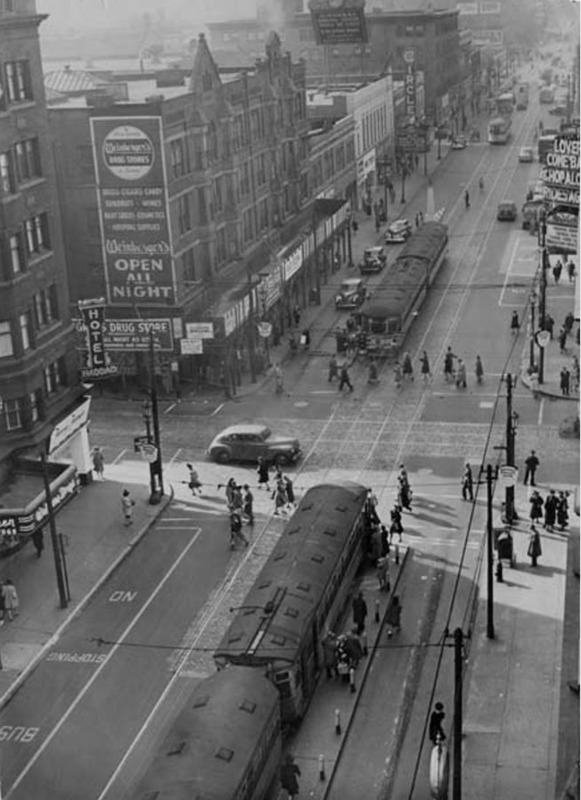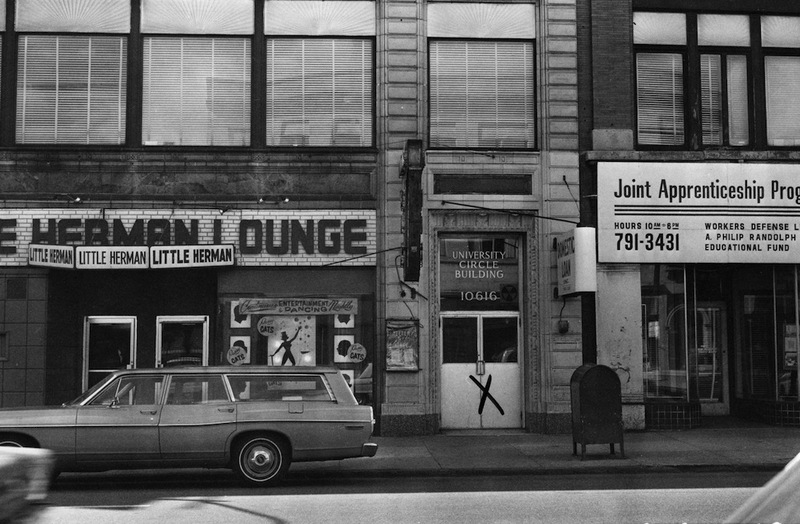
In the early 1800s the present-day intersection of Euclid Avenue and East 105th Street (then Doan Street) was known as Doan's Corners. Named after Nathaniel Doan, who owned a tavern, a hotel, and other businesses there, Doan's Corners was a stagecoach stop on the road between Cleveland and Buffalo, New York. Until the turn of the twentieth century, Doan's Corners lay in the midst of farmlands and country estates just east of "Millionaires' Row." Within a generation, however, many Clevelanders came to view the area around East 105th Street and Euclid Avenue as Cleveland's second downtown. The grand Alhambra Theater opened at 10403 Euclid Avenue in the early 1900s, and other entertainment venues followed in its wake. The area became a premier destination for arts and entertainment, with music clubs, restaurants, theaters, and retail shopping. These catered to a population that was increasingly moving eastward into neighborhoods like Hough, Glenville, and Wade Park. Streetcars also brought East Side suburbanites to the 105th Street area.
In the 1950s, nearby Hough and Glenville began to transform from majority-white to majority-black neighborhoods. The Euclid-East 105th area continued to attract a mostly suburban white clientele to its many entertainment venues. Along with the Alhambra, there were a number of theaters. The Circle Theater hosted a number of musicians and Keith's 105th Street Theater showed motion pictures. The Circle Theater brought in big-time acts like Roy Acuff and his Grand Ole Opry. Keith's 105th Street Theater and the Circle Theater helped give rise to artists and producers. At midcentury the Euclid-East 105th area also began to attract a growing African American clientele. The change was not without problems. In the early 1950s a series of bombings rocked the Towne Casino, a music club that attracted interracial patronage. The venue finally closed amid fears of attacks possibly calculated to stave off integration. By the 1960s, nearby University Circle institutional leaders and municipal officials eyed the district for urban renewal, envisioning an extension of their collective campus to replace this dense urban core.
After the Hough uprising and Glenville shootout in the later 1960s, white flight and disinvestment threatened to spell the end of the East 105th Street entertainment district. Not long after the riots, however, African American real estate developer Winston E. Willis stepped in and purchased many of the commercial properties around East 105th Street and Euclid Avenue, opening a number of adult-oriented businesses. However, Willis also opened a number of mainstream ventures, including the Scrumpy Dump Cinema and Winston's Place Fine Dining. He managed the block of businesses through his University Circle Properties Development Inc., whose UCPD signage mimicked that of the University Circle Police Department. Throughout the late 1970s and early 1980s, Willis was locked in legal battles with the city. His use of the old Keith's 105th Theater as a billboard to rail against the nearby Cleveland Clinic's expansionist planning as an affront to African Americans surely added to the resolve of his opponents. Through a number of city investigations, Willis was imprisoned and his property confiscated. In the early 1980s, nearly all of Willis's properties were demolished to make way for the William O. Walker Center, sounding the death knell for the anchor of Cleveland's "Gold Coast."
Audio
Images








